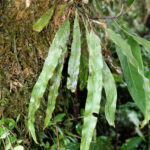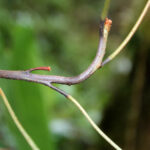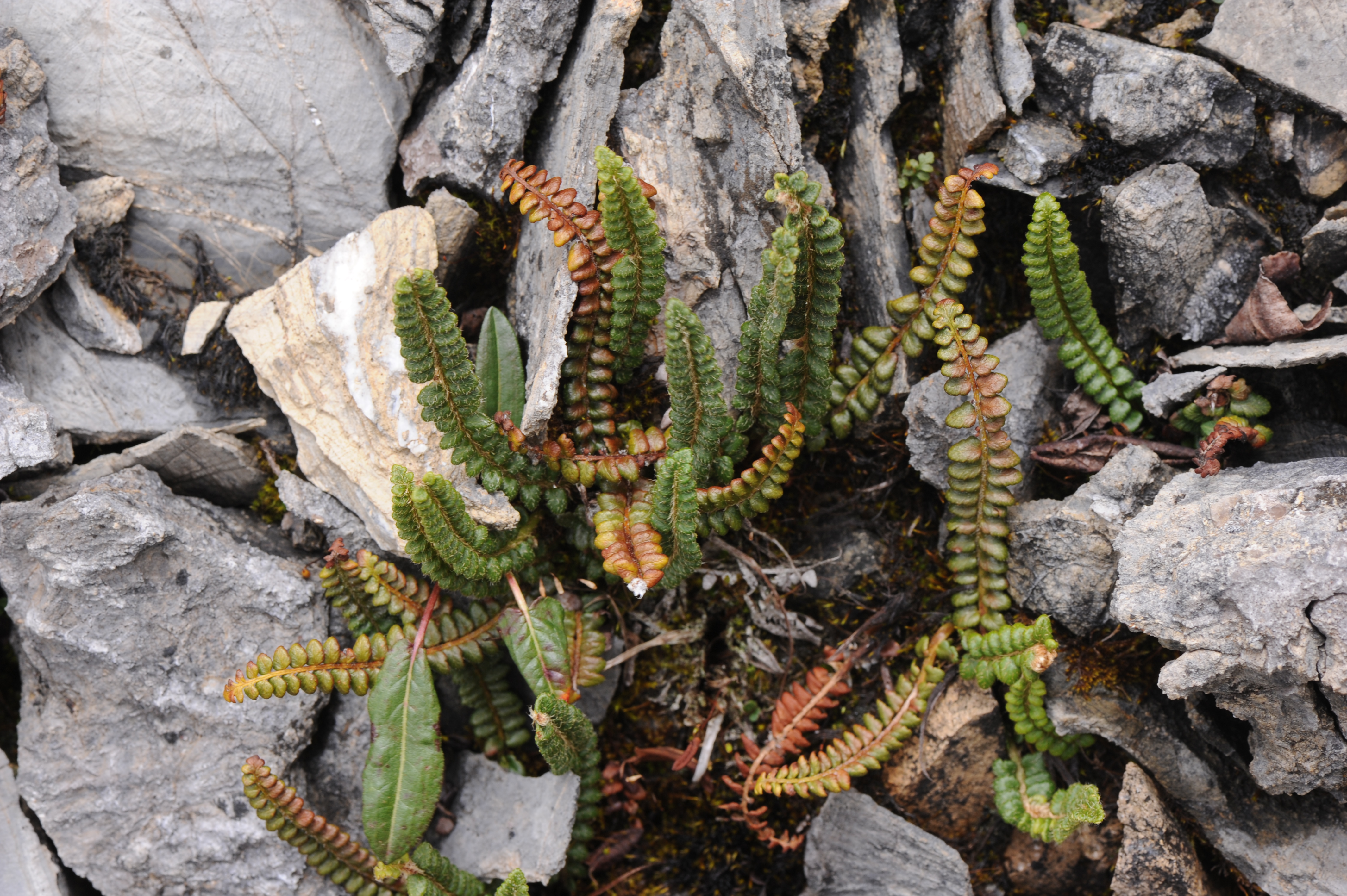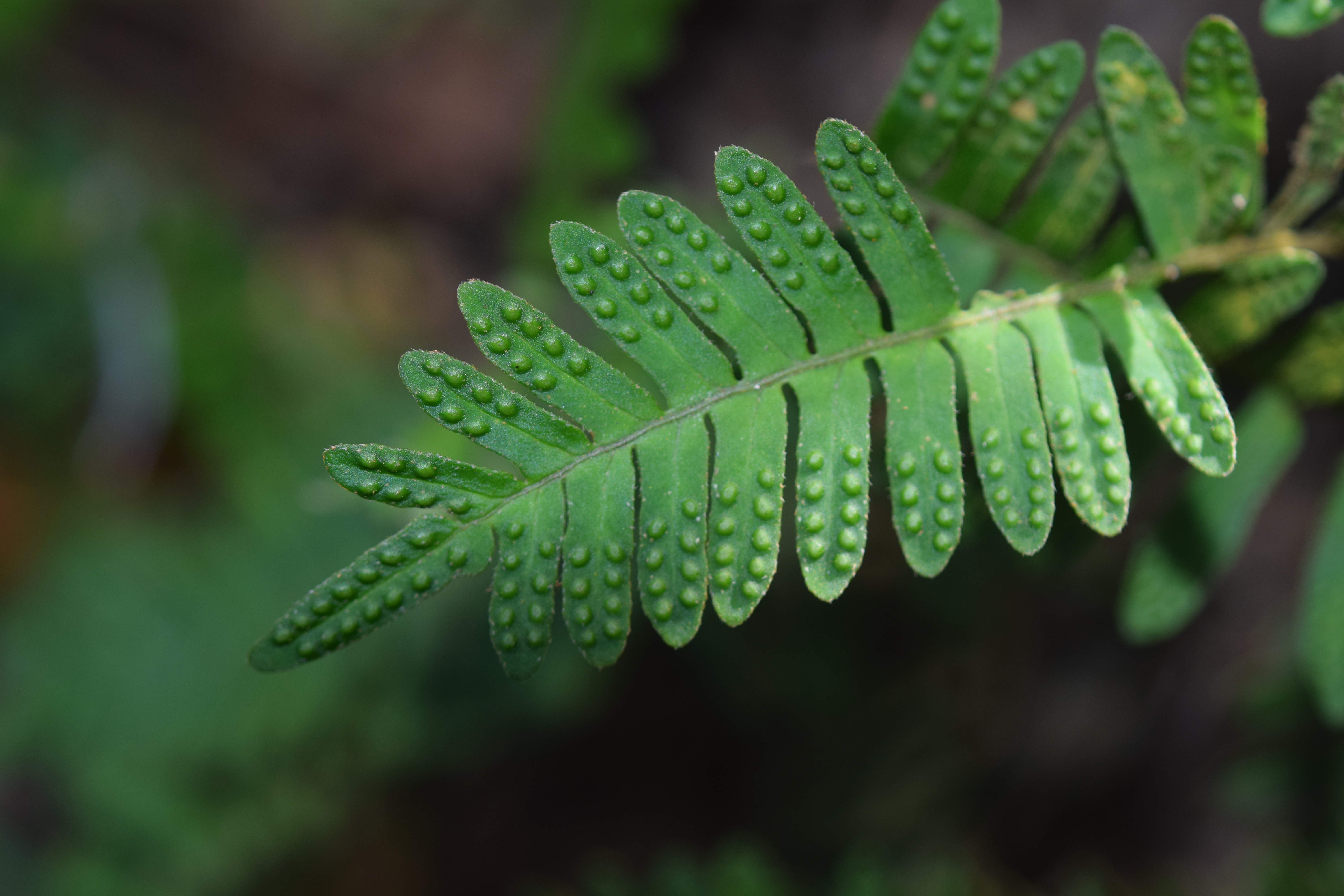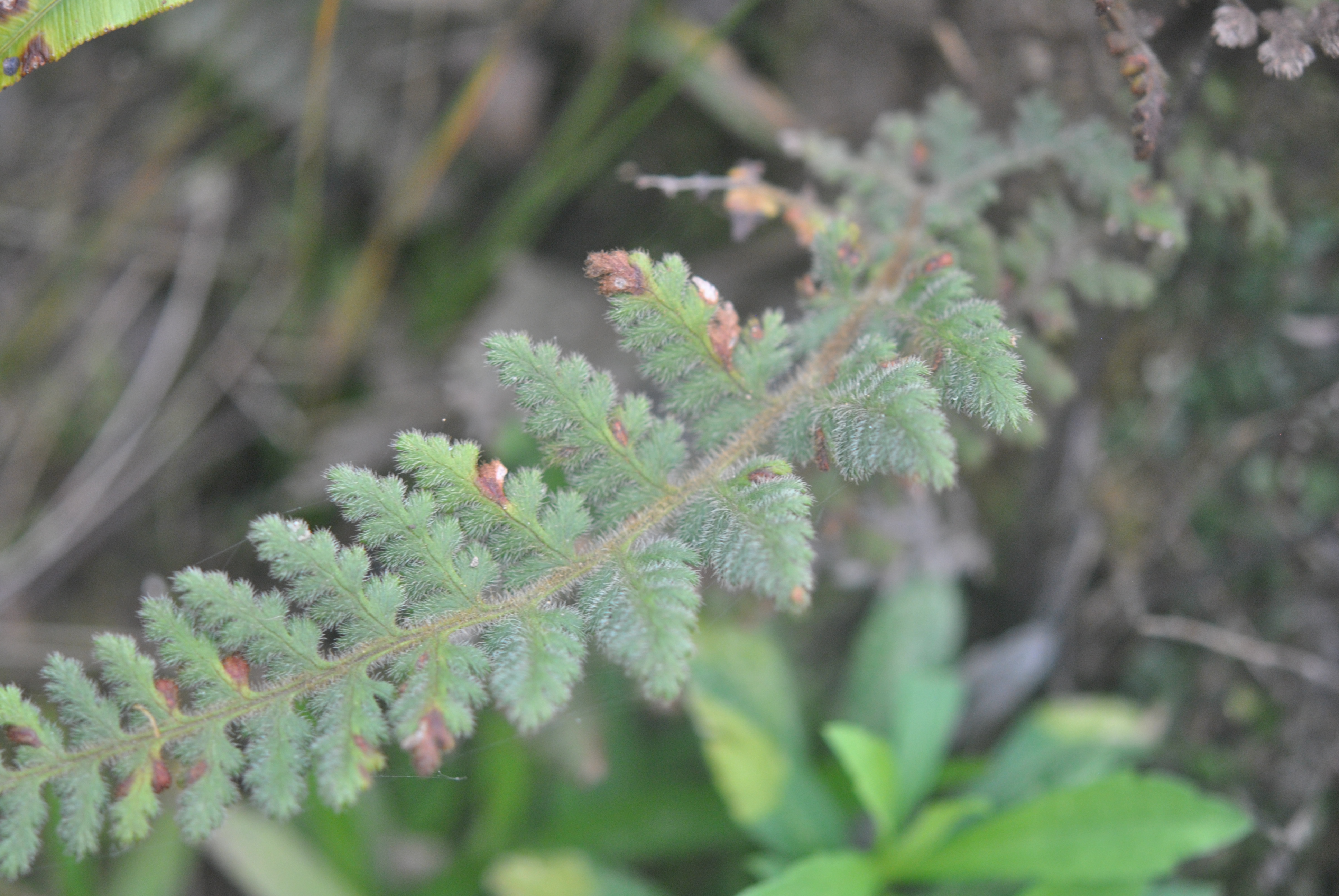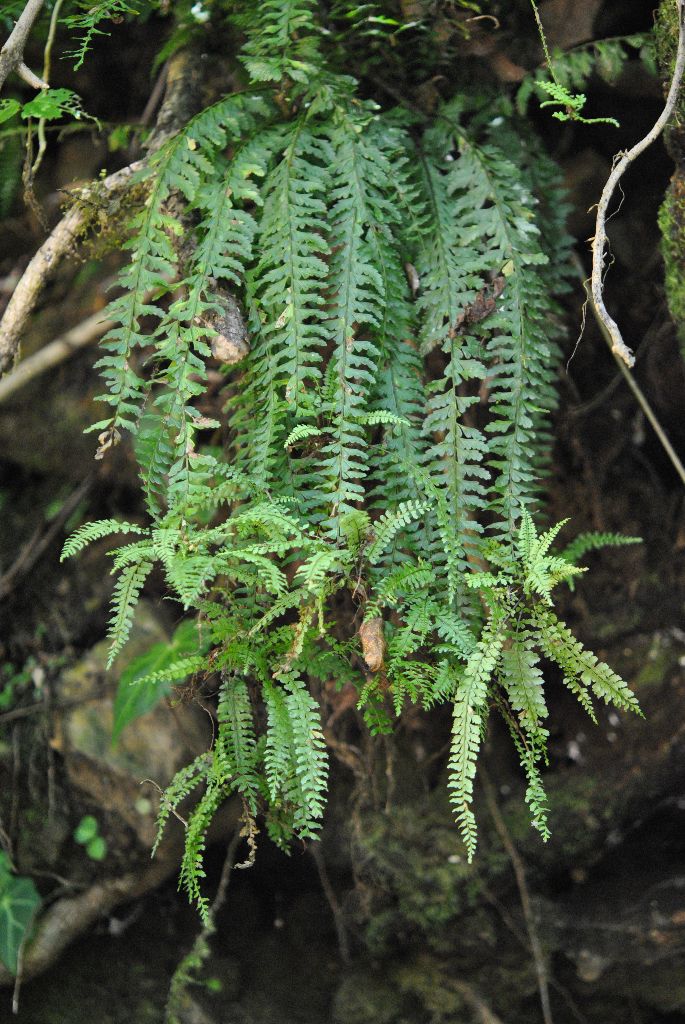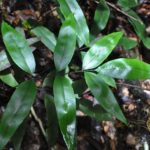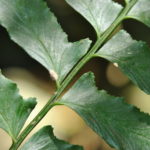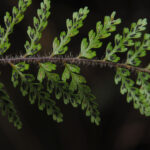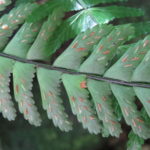This identification is tentative, and is based on the 2009 monograph of the group by Alejandra Vasco and colleagues. According to their treatment, this species differs from the very closely related E. ciliatum by “creeping rhizomes that have prominent scales at least around the apex”. As seen in these photos, this plant has a mostly glabrous rhizome with sparse scales at the apex.
Collection Data (W. Testo 1446)
Classification & Common Names
- Class: Polypodiopsida
- Family: Dryopteridaceae
- Genus: Elaphoglossum Schott ex J. Sm.
- Species: Elaphoglossum burchellii (Baker) C. Chr.
- Var./Subsp.:
- Common name(s):
General Collection Data
- Date: 19-VIII-2017
- Primary Collector & #: W. Testo 1446
- Collection Party: David Sanín, Gabriel Peñaloza, Sandra Urbano.
- Det. History: W Testo, October, 2017
- Habitat: Riparian forest
- Habit: Epiphyte
- Specimen Locations: HUA
Additional Comments
Epiphytic fern with creeping, nearly glabrous rhizome.
Collection Location
- Location: Reserva Natural La Planada – Ricaurte – Resguardo Indígena Awa de Ricaurte – Nariño – Colombia.
- Coordinates: 1.524N, 77.575W
- Elevation: 1750 m


